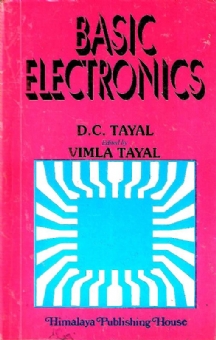It is with great pleasure that we present this book titled “Fundamentals of Electronics” for the undergraduate students of F.Y.B.Sc., Semester-II, under the Physics – Paper-II – Major Course at the University of Mumbai. This book has been carefully curated to align with the syllabus prescribed by the University of Mumbai as per New Education Policy (NEP) 2020.
This book aims to provide students with a comprehensive understanding of essential electronic concepts through structured content and practical insights. It covers key topics spread across two units, providing theoretical knowledge as well as fostering analytical thinking through practical examples and applications.
Unit I begins with an in-depth discussion on DC Power Supplies, elaborating on fundamental components such as transformers, rectifiers, filters, and voltage regulators. It introduces students to basic diode-based circuits like clippers and clampers and emphasizes the importance of voltage regulation using Zener diodes. Additionally, the unit explores Transistor DC Biasing, covering transistor characteristics, stability factors, and various biasing methods, offering qualitative insights into these critical circuit techniques.
Unit II focuses on the logical and computational aspects of electronics, starting with Number Systems, including conversions between binary, decimal, and hexadecimal systems. The unit then introduces Derived Gates, exploring the applications of NAND and NOR gates as universal building blocks, and demonstrates their utility in designing essential circuits like adders and parity checkers. Lastly, Boolean Algebra is thoroughly explained with theorems, simplification methods, and practical applications, empowering students to streamline logical expressions and circuit designs effectively.
In keeping with the NEP-2020, the content emphasizes conceptual clarity, skill enhancement, and the application of knowledge to real-world scenarios. This book is designed to engage students at all levels by presenting the subject matter in an accessible yet comprehensive manner. Diagrams, truth tables, and illustrative examples have been included to facilitate better understanding and to bridge the gap between theory and practice.
Contents –
Unit I
Chapter 1 D.C. Power Supply
Chapter 2 Transistor D.C. Biasing
Unit II
Chapter 3 Number Systems
Chapter 4 Derived Gates
Chapter 5 Boolean Algebra







